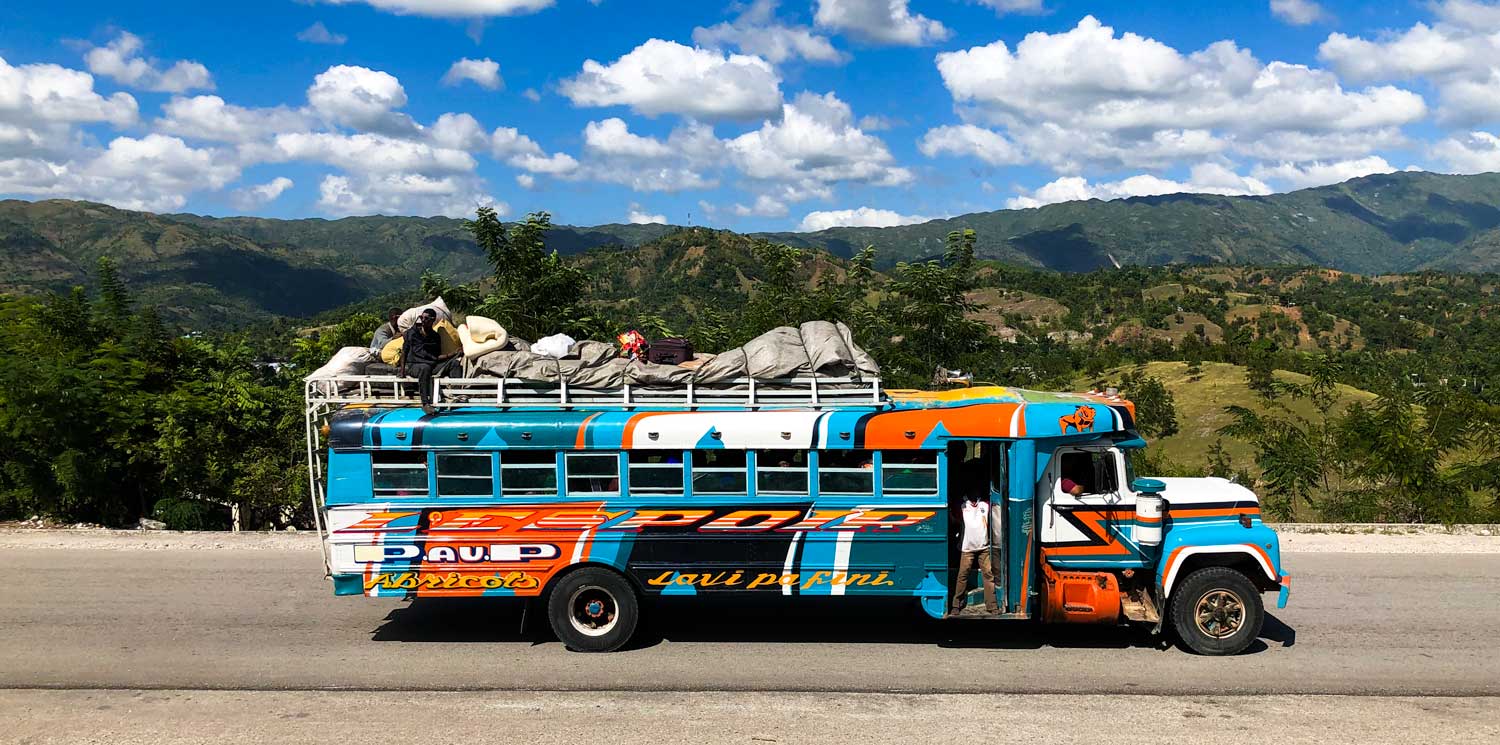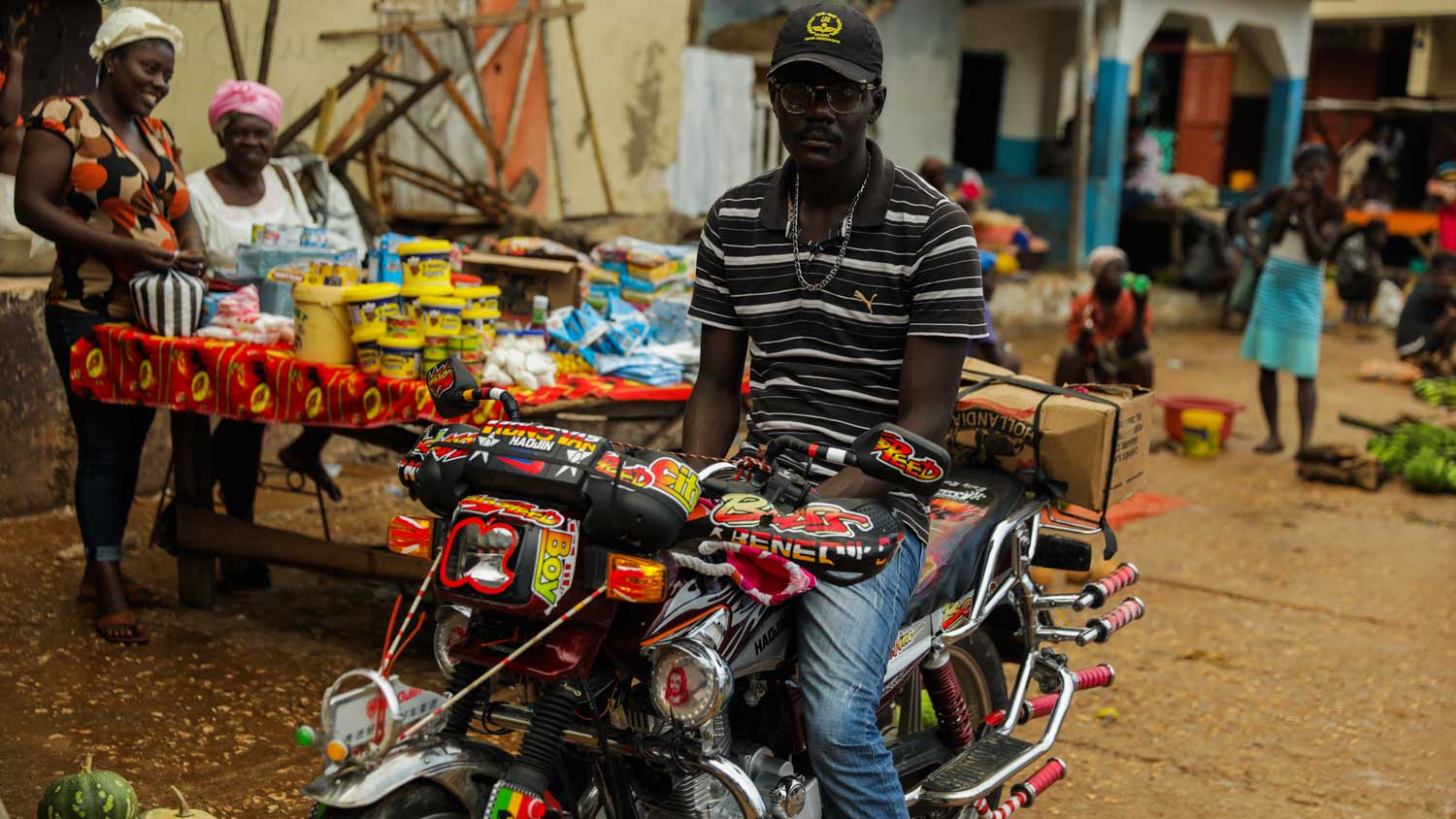
Photo: Anton Lau
Getting around: public transport in Haiti
Haiti’s inter-country infrastructure is reasonably well-developed, with most towns and tourist destinations connected via a network of roads to the major cities of Port-au-Prince, Jacmel, Jérémie and Cap-Haitien. In Haiti, you will come across many different types of public transportation, including buses, tap-taps and motos.
With so many ways to get around, public transport in Haiti can be daunting, but we’ve got you covered.

Photo: Franck Fontain
Carry change
First up, be sure to carry change with you – specifically Haitian Gourdes (HTG). Big bills won’t cut it here as tap-tap and bus drivers will have a hard time giving you change out of so much money. Instead, make sure you’re well stocked on bills of 10, 25, 50, and at most, 100 HTG, as well as 5 HTG coins.
This will get you around quickly and efficiently, save you time waiting for change from the driver and the flustering experience of being told they can’t break your bill.
Busses
Buses and minibuses (tap-taps) are the cheapest way to get around Haiti.
The 5 main private bus companies Capital Coach, Haiti Trans, San Souci Tours, Caribe Tours, and Terra Bus all have comfortable 52-seat buses with air-conditioning.
Caribe Tours and Terra Bus specialise in taking passengers back and forth to Santo Domingo in the Dominican Republic.
San Souci Tours connects Port-au-Prince to Gonaïves, Plaisance, Limbé, Cap-Haïtien and Ouanaminthe. They generally stop once around midway, where you can stretch your legs, get something to eat and drink, and recharge your cellphone. To ensure you get a seat, make a reservation in person the day before, and arrive at the departure point two hours before the scheduled departure time.
Haiti Trans connects Port-au-Prince to Cap-Haitien, and Capital Coach is great for getting from one side of sprawling Port-au-Prince to the other.

Photo: Franck Fontain
Tap-taps
Literally “Quick-quick”, these cheerfully-painted minibuses follow a predetermined route, connecting suburb to suburb and taking you out to towns around the country.
Watch our video on how to take a tap tap!
Let’s recap:
From where you’re staying, make your way to the nearest tap-tap or bus station. If it’s too far away, find out (from your host or local guide) if they pass by your way – if they do, it’s easy to flag them down and they’ll be happy to fit you on as long as you can physically squeeze in.
You’ve spotted a tap-tap coming your way! Quick, hail them to stop. Now, because many tap-taps and buses use the same roads, the first thing you’ll want to say to the driver is, “Bonjou, [insert destination here]?” Let’s say you were headed to downtown Port-au-Prince from Delmas; you might want to go to the National Museum of the Haitian Pantheon. You’d hail a bus, and say, “Bonjou, Nazon?” Although Nazon is not the final destination of that bus, it is the area through which it will go.
The driver will either motion you to climb aboard, or tell you he won’t be going through Nazon. Once you find the bus or tap-tap you need, hop on and find yourself a seat. Passengers do get very cozy, as drivers try to get a maximum of people on board a minimal amount of space. If you do bump into anyone, a quick “Padon!” will save you some harsh looks.
Once you reach your destination, let the driver know by saying in a loud and clear voice, “Mèsi!” Once you get off the bus, you can hand them the cash through the window, and if there is any change to be handed back, they will do so.

Photo: Mikkel Ulriksen
Motos
Motos are privately owned motorcycle taxis. They function well as a replacement for regular cabs, which you won’t find in Haiti. Moto drivers are widely available and ready to take you anywhere.
These motorcycle taxis are great for short trips. Longer rides can be dangerous as they don’t offer helmets. If your driver is going too fast for you, it’s ok to ask him to slow down.
Avoid having more than one passenger per moto since this increases the chance of an accident. It is crucial to carry small notes so you can tender the correct fare, as the drivers are often reluctant to give change. Just like the tap-taps, you pay your moto driver once you’ve reached your destination.
Want to learn how to moto like a local? Read our guide here.
Taxis
If you appreciate comfort, you might prefer to see the sights in the back of an air-conditioned car than in one of the more widespread forms of public transport. However, you won’t find any yellow cabs to flag down in Haiti – instead, you’ll have to book a private driver in advance through a travel agent, hotel, or tourism desk.

Photo: Anton Lau
Boats
Public water taxis are common and comparatively cheap in Haiti’s north and south for getting between towns or landmarks not connected by roads. There are also private boat operators who will offer to take you, but don’t get the two confused – the private boat taxis are much less affordable.

Photo: Franck Fontain
How much does public transport cost in Haiti?
Here’s the thing. Because Haiti doesn’t have a unified public transportation system, prices vary depending on where you go, and on how much gasoline costs at a given moment in time. For example, in November of 2018, you could get around from Delmas to Champ-de-Mars for 25 HTG, or from Pétion-Ville to Thomassin for 20 HTG, but this information could change at any time.
It’s always best to ask your host or any locals you may know what the going rates are for different routes. That way, you’ll make sure you get a fair rate, and that you always carry enough cash.
Happy traveling!
Written by Kelly Paulemon.
Published December 2018
Top things to see in Haiti

Paradise for your inbox
Your monthly ticket to Haiti awaits! Get first-hand travel tips, the latest news, and inspiring stories delivered straight to your inbox—no spam, just paradise.



